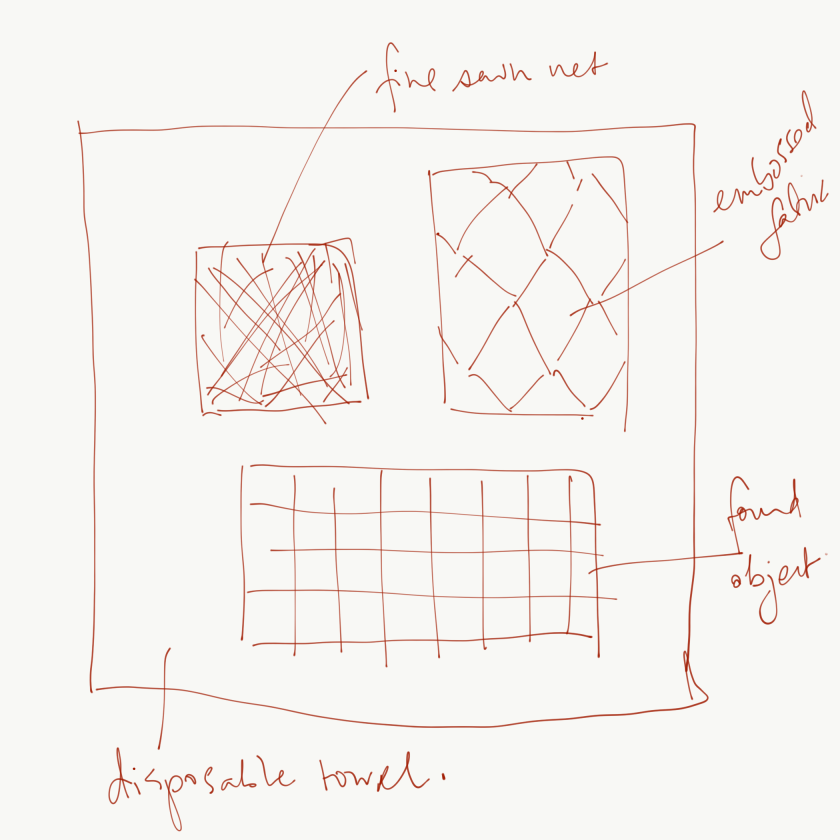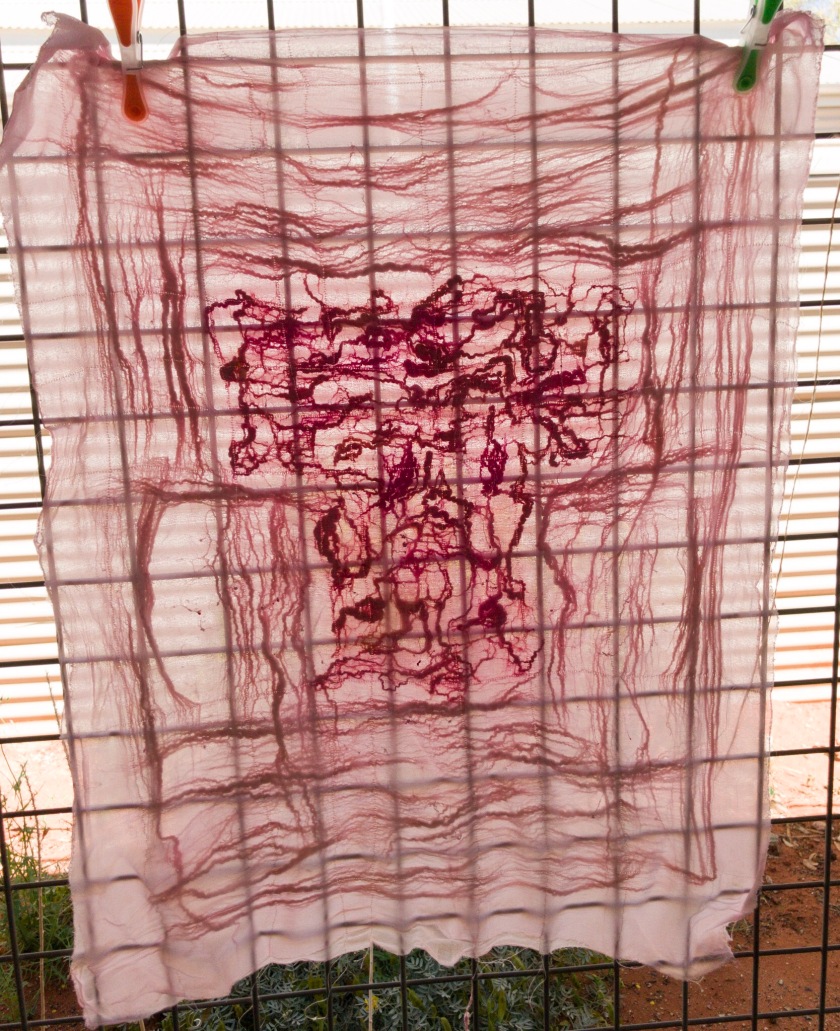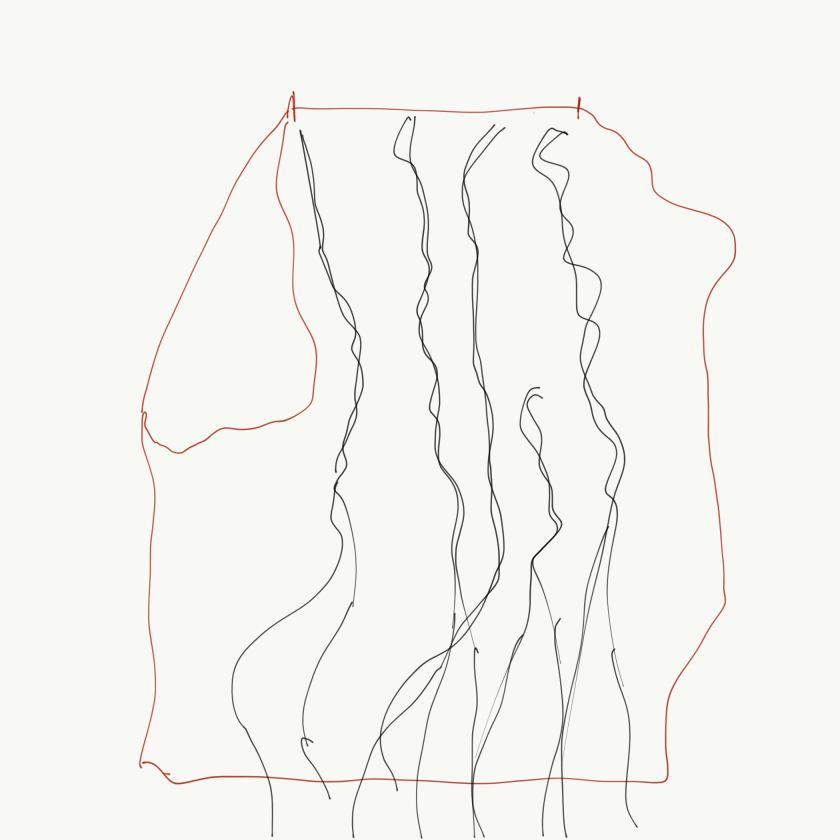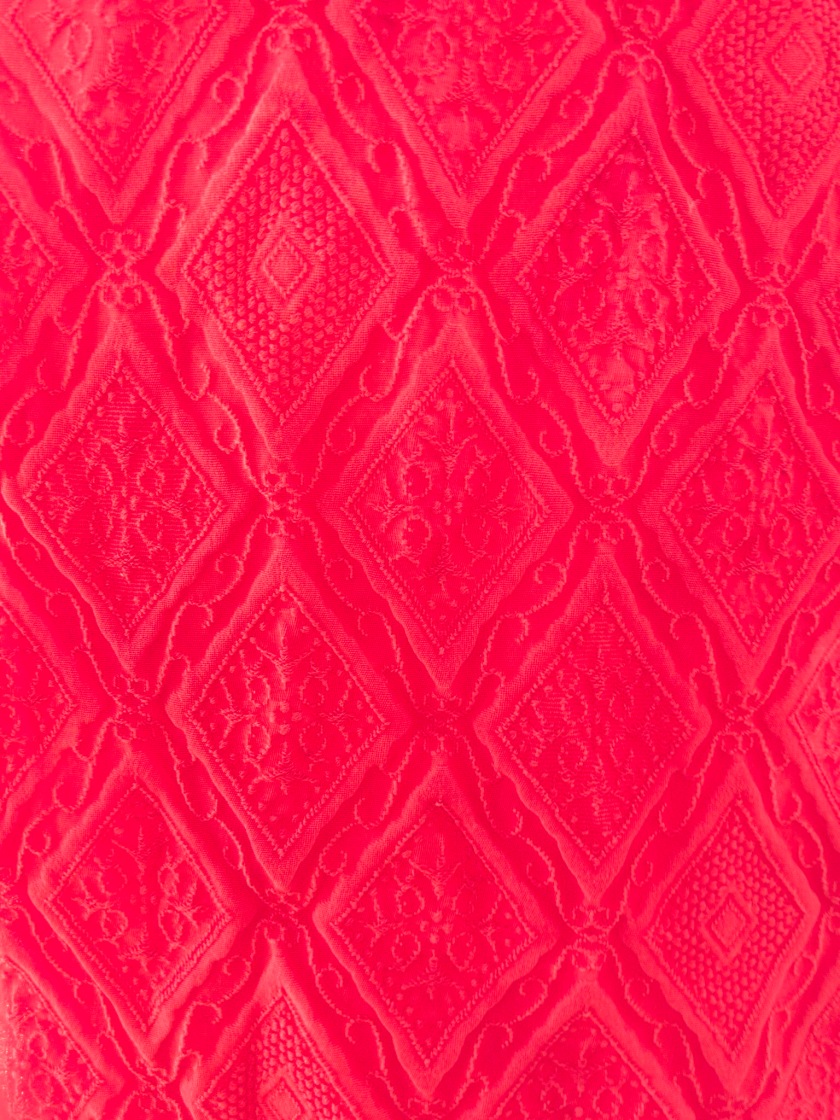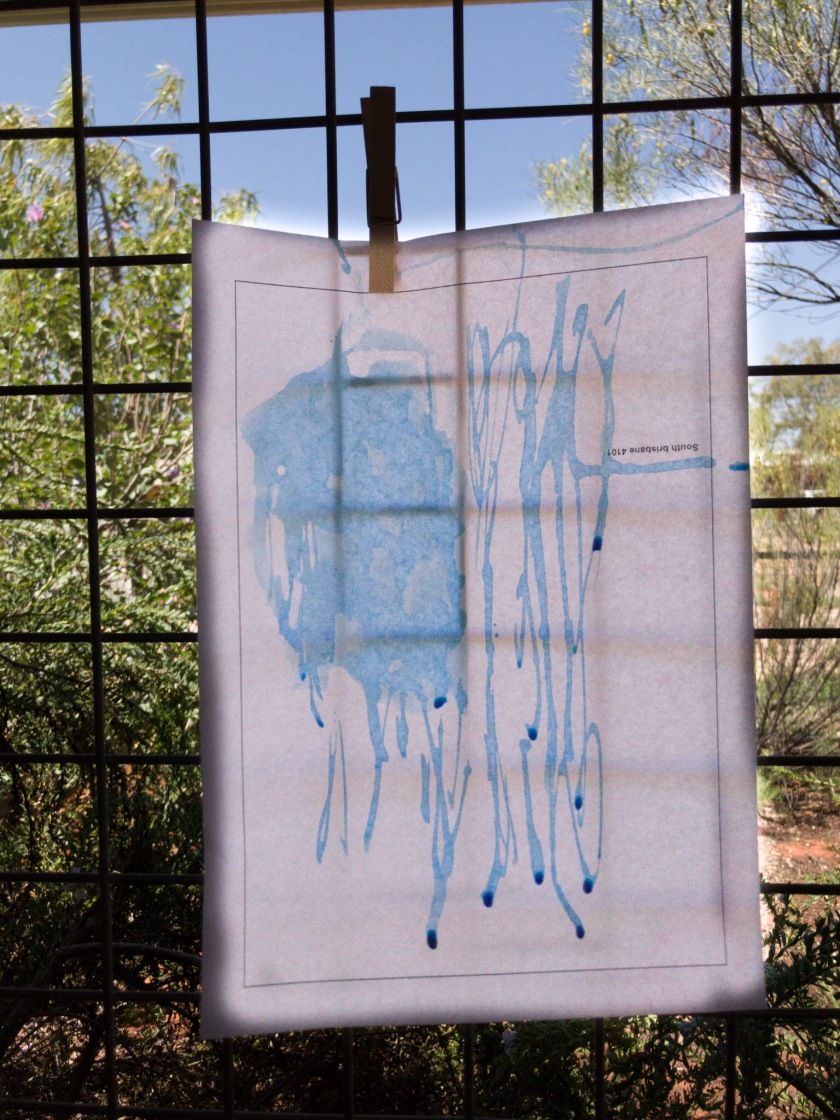Planning here for the Ebb and Flow themed art quilt to go in the TQG art prize. As usual not much time left so need to get going. 
I have started making a range of fabrics by combining my dyed fabrics from the outback with rough raw edge appliqué in the following configuration based on the composition of the following photo. The collage technique in the coursework has inspired me to start with a fabric collage technique to create a unique fabric and then move on to cutting that up in order to abstract the idea a bit while staying true to the colour combinations.

I’ve left this black and white so I can introduce the appropriate colours based on the changing weather.
Next the plan is to cut these fabrics into 5 inch raw edge approximate squares. Because of the nature of my sloppy appliqué the squares are not all perfect but I plan to leave them raw edge and apply them with space in between to a further dyed batting background. I’ve ordered some woven batting because my cotton batting went crazy with shrinkage and shredding in the washing machine after dyeing.
Next the plan is to grade the squares from the different weather states across the quilt in some way. Sort of similar to a colourwash quilt. I’m doing this because I always enjoy working on small individual pieces to create a series of mini landscapes within the larger landscape. But also as a bit of a nod to traditional quilting.
I’m not sure of the shape yet. I am bound by the constraints of max 150 x150 cm when I would have like to do something more like 50 x 300 cm so that it would read left to right and I could emphasise the ebb and flow idea. I’m thinking now about using a golden mean rectangle with the long edge close to 150. That would make the short side around 90 cm and the long edge 146 cm.
I’m not sure how to flow the blocks across so the ebb and flow of water, land and foliage is best illustrated. Possibly diagonal so that it reads across with a forward leaning diagonal?

Plan to individually embellish each square to make them tiny works of art in their own right but hopefully also work together to read as I planned.
Finally I would like it to hang fairly stiffly rather than drape like a painting with texture rather than completely as a crinkled quilt. For this I may apply the lot to unstretched canvas and quilt heavily in diagonals over the top. Don’t want this quilting to be too dominant so I may use fine red dirt coloured thread, just to apply the haze of red dirt over my landscape.
Will need to find out what the rules are about binding. I’d be happy not to bind and just maybe seal the edge with paint? Or can it be stretched on a frame? I like stretched on a frame because it can be removed afterwards and used in other projects that need drape. I just don’t like the drape of a quilt on a wall. I think the surface is better displayed stretched. Maybe I could stretch over a board?
Had a range of other ideas since then:
-Interfacing to back of individual blocks making them stiff enough to felt through. I have a woven fusible interfacing so should be able to do the felting through that.
-Once individually felted will hopefully be quite stiff. Plan is to add stitch at this stage to try and enhance the mini landscape feel of each block. Then can then be attached to dyed woven batting and backing and further embellished with quilting.
-Revisited the outback photo I have that highlights all the colours of the outback with storm and blue sky, orange dirt and trees. The palette there does not include anything that is truly green. Today I sorted out the fabrics that I dyed from life while there and selected that palette. It does look harmonious and natural and has made me rethink how much of the brighter green I need in the quilt. Think I will make a collage of this colour scheme for a few more blocks and then make one with very small amounts of brighter green only. I think the bright green is present in the landscape in close up and needs to be included as part of the ebb and flow.









